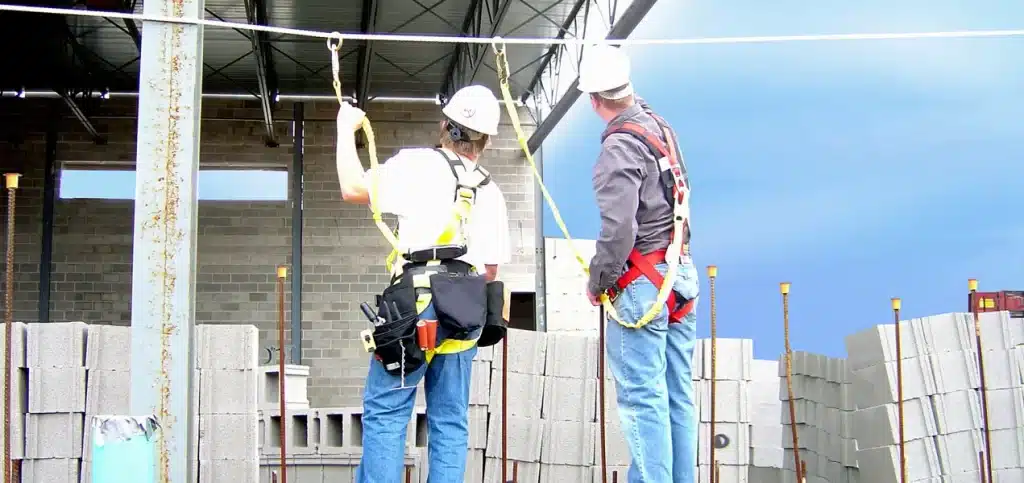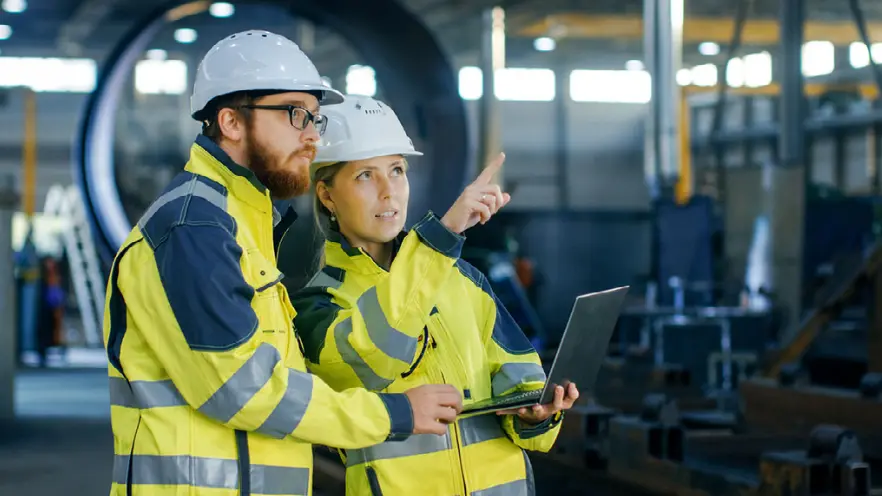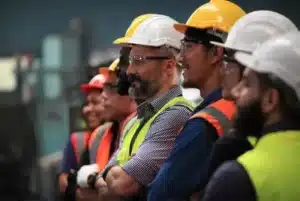Your cart is currently empty!
Ignoring Fall Protection in the Workplace: The High Cost of Low Priorities
The safety and well-being of employees are crucial in any workplace. One of the biggest hazards that employees face is falls, which can lead to serious injuries, disabilities, and even fatalities. Falls are a major cause of workplace injuries and deaths, and the cost of ignoring fall protection can be significant both financially and in terms of human life. In this article, we will explore the consequences of ignoring fall protection, including the financial and human costs, and why implementing fall protection measures is essential for any workplace.
The Human Cost of Ignoring Fall Protection

Falls can have devastating consequences for employees, both physically and emotionally. Broken bones, spinal cord injuries, traumatic brain injuries, and other serious injuries can result from falls, leading to long-term disabilities and decreased quality of life. The emotional toll of workplace accidents can also be significant, causing anxiety, depression, and post-traumatic stress disorder (PTSD). In some cases, falls can even result in death.
Falls are a leading cause of workplace injuries and deaths in many countries around the world. According to the United States Bureau of Labor Statistics (BLS), falls accounted for 880 fatalities in the US in 2019, representing 17.5% of all occupational fatalities. Of these falls, 401 were from the same level, while 479 were from an elevated height.
In addition to fatalities, falls also account for a significant number of non-fatal workplace injuries. In 2019, the BLS reported that falls resulted in 244,260 non-fatal injuries that required days away from work in the US. This represented a rate of 29.3 injuries per 10,000 full-time workers.
The time lost from the job because of a fall-related injury can vary depending on the severity of the injury and the individual’s recovery time. Falls can result in a range of injuries, from minor cuts and bruises to more serious injuries such as broken bones, head injuries, and spinal cord injuries. Recovery times can vary widely based on the type and severity of the injury.
In general, fall-related injuries tend to result in longer periods away from work compared to other types of workplace injuries. According to the BLS, the median number of days away from work for nonfatal fall injuries that required days away from work in 2019 was 13 days. This was higher than the median number of days away from work for all types of non-fatal workplace injuries, which was 8 days.
The cost of fall-related injuries and deaths can be significant. The National Safety Council (NSC) estimates that the average workers’ compensation claim for a fall injury in the United States is $48,000. However, this estimate does not include indirect costs such as lost productivity, replacement workers’ training, and legal fees.
Falls also result in lost productivity, both for the injured employee and for other employees who may need to cover their workload while they recover. Injuries may also lead to increased healthcare costs and absenteeism.
The impact of falls is not limited to the injured employee and their employer. Falls can also have a significant impact on the employee’s family and community. For example, family members may need to provide care for the injured employee, resulting in lost wages and decreased quality of life.
The Financial Cost of Ignoring Fall Protection

Ignoring fall protection can also be expensive for employers. Medical expenses, workers’ compensation claims, lost productivity, and legal fees can add up quickly. According to the National Safety Council (NSC), the average workers’ compensation claim for a fall injury in the United States is $48,000. This amount does not include indirect costs, such as lost productivity, replacement workers’ training, and costs related to potential legal action.
The Occupational Safety and Health Administration (OSHA) has released its list of the most frequently cited safety standards violations for 2022. OSHA’s Fall Protection Standard remains at the top of the list for the twelfth year in a row. OSHA issued over 5,000 citations for fall protection violations in 2022. This amount of citations add up to a serious amount of financial penalties for many companies.
For serious violations related to fall protection, OSHA can propose fines of up to $15,625 per violation. For willful or repeated violations related to fall protection, OSHA can propose fines of up to $156,259 per violation. The fines can increase even further if the violation results in a fatality or serious injury.
In addition to fines, OSHA may also require employers to correct the violation and implement measures to prevent future violations. This can include providing training to employees, improving safety equipment, and conducting regular safety inspections.
The cost of an OSHA fall protection violation can be significant, not only in terms of the financial penalty but also in terms of the impact on a company’s reputation and employee morale. Employers who prioritize fall protection in their safety programs can minimize the risk of OSHA violations and create a safer working environment for their employees. This includes conducting regular hazard assessments, providing appropriate fall protection equipment, and ensuring that employees are trained on the use of the equipment and the importance of fall protection measures.
The Importance of Implementing Fall Protection Measures
To protect employees from falls and avoid financial losses, employers must implement fall protection measures in the workplace. The following are some of the most effective measures that can be taken to prevent falls:

-
Conducting a Hazard Assessment:
A hazard assessment is an important step in identifying potential fall hazards in the workplace and developing effective fall protection measures. A hazard assessment involves identifying all areas in the workplace where falls may occur, assessing the risk associated with each hazard, and taking steps to eliminate or control the risk.
To conduct a hazard assessment, employers should start by examining each area of the workplace and identifying any potential fall hazards. This includes areas such as elevated work surfaces, ladders, scaffolds, and roofs. Employers should also consider other factors that may increase the risk of falls, such as poor lighting, uneven surfaces, and inclement weather conditions.
Once potential hazards have been identified, employers should assess the level of risk associated with each hazard. This can be done by considering factors such as the likelihood of a fall occurring, the potential consequences of a fall, and the frequency with which employees are exposed to the hazard. This information can be used to prioritize hazards and determine which hazards require immediate attention.
Once the hazards have been identified and the level of risk associated with each has been assessed, employers should take steps to eliminate or control the risk. This may involve implementing engineering controls, such as guardrails or safety nets, or administrative controls, such as limiting access to hazardous areas or requiring the use of personal fall protection equipment. Employers may also need to provide training to employees on the use of fall protection equipment and safe work practices.
Regular hazard assessments should be conducted to ensure that any new hazards are identified and addressed promptly. This can help employers stay ahead of potential hazards and minimize the risk of falls in the workplace.
-
Provide Fall Protection Equipment:
Providing fall protection equipment is an important part of any effective fall protection program. Fall protection equipment is designed to protect workers from falls and reduce the risk of injury or death in the event of a fall. There are several different types of fall protection equipment available, including personal fall arrest systems, safety nets, guardrails, and ladder safety systems.
When providing fall protection equipment, employers must ensure that the equipment is appropriate for the specific work environment and job duties. This includes selecting equipment that is appropriate for the height of the work surface, the type of work being performed, and the weight and size of the worker. Employers should also consider the potential hazards associated with the work environment and select equipment that is appropriate for the specific hazards present.
Employers must ensure that fall protection equipment is properly maintained and inspected regularly. This includes ensuring that equipment is kept clean and free of damage and that any damaged equipment is repaired or replaced promptly.
In addition to providing fall protection equipment, employers should also ensure that employees are wearing the equipment properly and using it as intended. This includes ensuring that harnesses are properly fitted, that lanyard are correctly attached, and that equipment is used in accordance with the manufacturer’s instructions.
Employers should also consider the comfort and usability of fall protection equipment when selecting equipment to provide to employees. This can help encourage employees to use the equipment properly and reduce the risk of injuries resulting from improperly used or uncomfortable equipment.
-
Ensure Proper Use and Inspection:
Ensuring proper use and inspection of fall protection equipment is a critical aspect of any effective fall protection program. Fall protection equipment, such as harnesses, lanyards, anchors, and lifelines, must be used correctly to provide adequate protection in the event of a fall.
To ensure the proper use of fall protection equipment, employers must provide training to workers on how to use the equipment correctly. This includes proper fitting of harnesses, attachment of lanyards, and use of anchors and lifelines. Workers should also be trained on how to properly inspect their equipment for wear and tear, damage, or other issues that may compromise its effectiveness.
Employers should establish procedures for regular inspections of fall protection equipment to ensure that it is in good working condition. Equipment inspections should be conducted by competent persons who have received training on proper inspection techniques and are knowledgeable about the specific equipment being inspected.
During inspections, equipment should be carefully examined for signs of wear, damage, or other defects that may compromise its effectiveness. Any equipment that is found to be damaged or in need of repair should be taken out of service immediately and either repaired or replaced as necessary.
Employers should also establish procedures for keeping records of equipment inspections, including the date of the inspection, the name of the person who conducted the inspection, and any issues identified during the inspection. These records can be used to track the condition of equipment over time and to identify any patterns or trends that may indicate the need for additional training or changes to equipment or procedures.
FrenchCreek offers several inspection forms to assist in the daily inspection of fall protection equipment.
-
Provide Adequate Training:

Providing adequate training is a critical component of any effective fall protection program Employers are required to properly train workers on the use of fall protection equipment, as well as on the hazards associated with working at heights and how to prevent falls from occurring.
The training should cover all aspects of fall protection, including the selection, use, and maintenance of fall protection equipment. Workers should be taught how to inspect equipment before use, how to properly fit and adjust harnesses, and how to use lanyards and lifelines correctly. They should also be trained on how to properly tie off to anchor points, how to recognize fall hazards, and how to respond in the event of a fall.
Training should also cover the importance of following established procedures and using the proper equipment for the job. Workers should be trained on how to work safely at heights, how to properly use ladders and scaffolding, and how to safely navigate around openings or edges where falls may occur.
Employers should also provide regular refresher training to employees to ensure that they remain up-to-date on the latest safety procedures and equipment. This is particularly important when new equipment or procedures are introduced, or when there are changes to the work environment or job duties.
In addition to providing training, employers should also make sure that employees have access to the resources they need to work safely. This includes providing adequate supervision, ensuring that safety equipment is readily available, and making sure that workers have the necessary tools and equipment to perform their job safely.
-
Create and Enforce Safety Policies:
Safety policies help establish a culture of safety in the workplace and provide clear guidelines for employees to follow to prevent falls and other accidents.
To create effective safety policies, employers should first identify the specific hazards associated with their workplace and job duties. This can be done through a hazard assessment, which involves identifying potential fall hazards and assessing the level of risk associated with each hazard.
Based on the results of the hazard assessment, employers can develop policies and procedures that address specific hazards and risks. Policies may include requirements for the use of personal protective equipment (PPE), such as harnesses and lanyards, as well as requirements for the proper use of ladders, scaffolds, and other equipment.
Policies should also include clear guidelines for reporting and addressing hazards and near-miss incidents. Workers should be encouraged to report any hazards or unsafe conditions they observe, and employers should have procedures in place to address these concerns and take corrective action as necessary.
To enforce safety policies, employers should establish a system for monitoring and evaluating compliance with policies and procedures. This may include conducting regular safety inspections, reviewing incident reports and near-miss reports, and providing feedback and corrective action as needed.
Employers should also make sure that employees are aware of the consequences of violating safety policies, including disciplinary action or termination if necessary. By enforcing safety policies consistently and fairly, employers can help promote a culture of safety and reduce the risk of falls and other accidents in the workplace.
Ignoring Fall Protection Is Not Worth The Cost
Falls are a significant hazard in the workplace that can lead to severe consequences for employees, including injuries, disabilities, and fatalities. Additionally, ignoring fall protection can be expensive for employers, leading to workers’ compensation claims, lost productivity, and OSHA penalties. Implementing fall protection measures in the workplace is essential for protecting employees and avoiding these significant costs. Employers should conduct hazard assessments, provide appropriate fall protection equipment, ensure proper use and inspection, provide adequate training, and establish and enforce safety policies and procedures related to fall protection. By doing so, employers can create a safe working environment and avoid the high cost of ignoring fall protection.